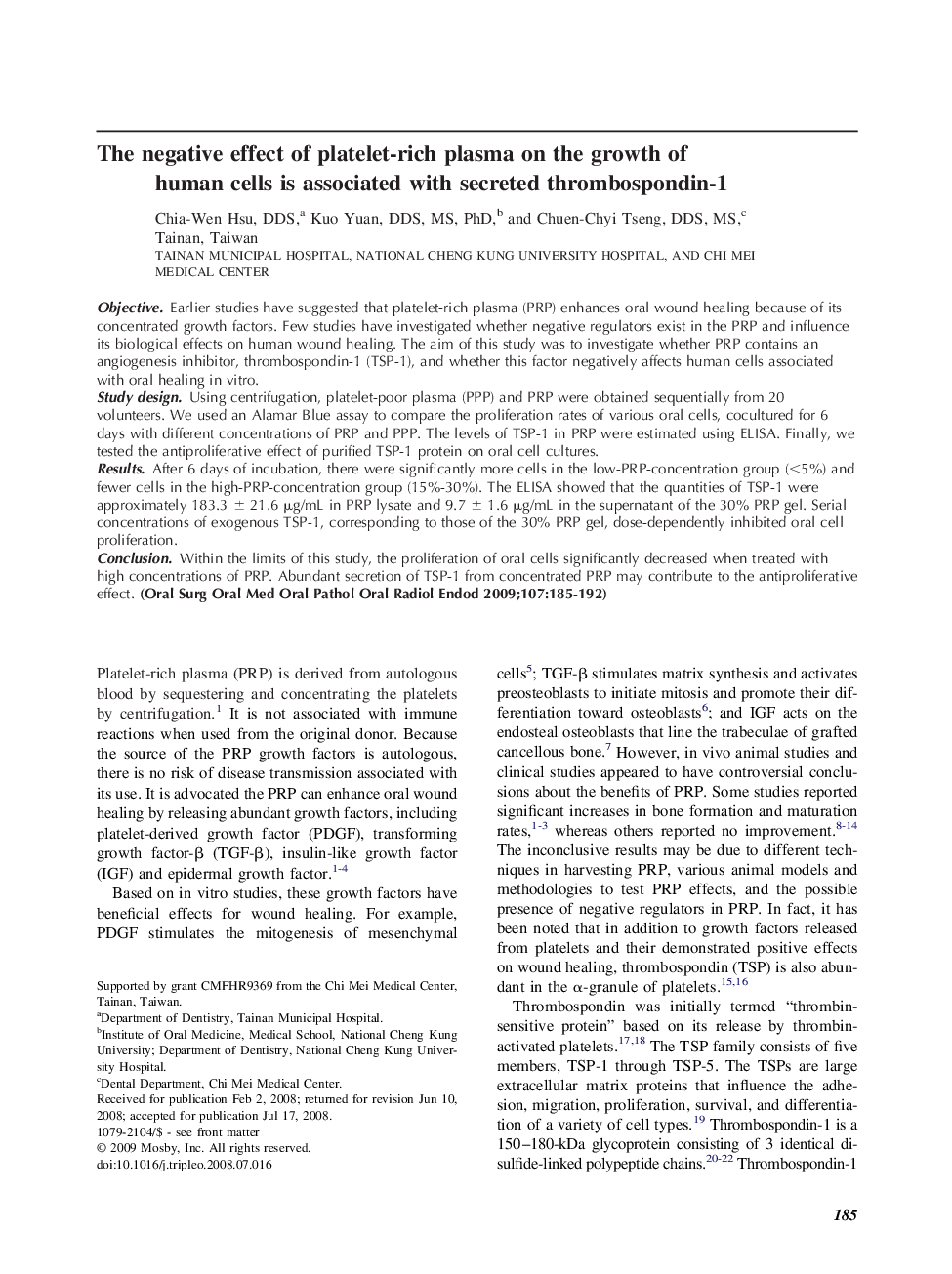| Article ID | Journal | Published Year | Pages | File Type |
|---|---|---|---|---|
| 3168319 | Oral Surgery, Oral Medicine, Oral Pathology, Oral Radiology, and Endodontology | 2009 | 8 Pages |
ObjectiveEarlier studies have suggested that platelet-rich plasma (PRP) enhances oral wound healing because of its concentrated growth factors. Few studies have investigated whether negative regulators exist in the PRP and influence its biological effects on human wound healing. The aim of this study was to investigate whether PRP contains an angiogenesis inhibitor, thrombospondin-1 (TSP-1), and whether this factor negatively affects human cells associated with oral healing in vitro.Study designUsing centrifugation, platelet-poor plasma (PPP) and PRP were obtained sequentially from 20 volunteers. We used an Alamar Blue assay to compare the proliferation rates of various oral cells, cocultured for 6 days with different concentrations of PRP and PPP. The levels of TSP-1 in PRP were estimated using ELISA. Finally, we tested the antiproliferative effect of purified TSP-1 protein on oral cell cultures.ResultsAfter 6 days of incubation, there were significantly more cells in the low-PRP-concentration group (<5%) and fewer cells in the high-PRP-concentration group (15%-30%). The ELISA showed that the quantities of TSP-1 were approximately 183.3 ± 21.6 μg/mL in PRP lysate and 9.7 ± 1.6 μg/mL in the supernatant of the 30% PRP gel. Serial concentrations of exogenous TSP-1, corresponding to those of the 30% PRP gel, dose-dependently inhibited oral cell proliferation.ConclusionWithin the limits of this study, the proliferation of oral cells significantly decreased when treated with high concentrations of PRP. Abundant secretion of TSP-1 from concentrated PRP may contribute to the antiproliferative effect.
